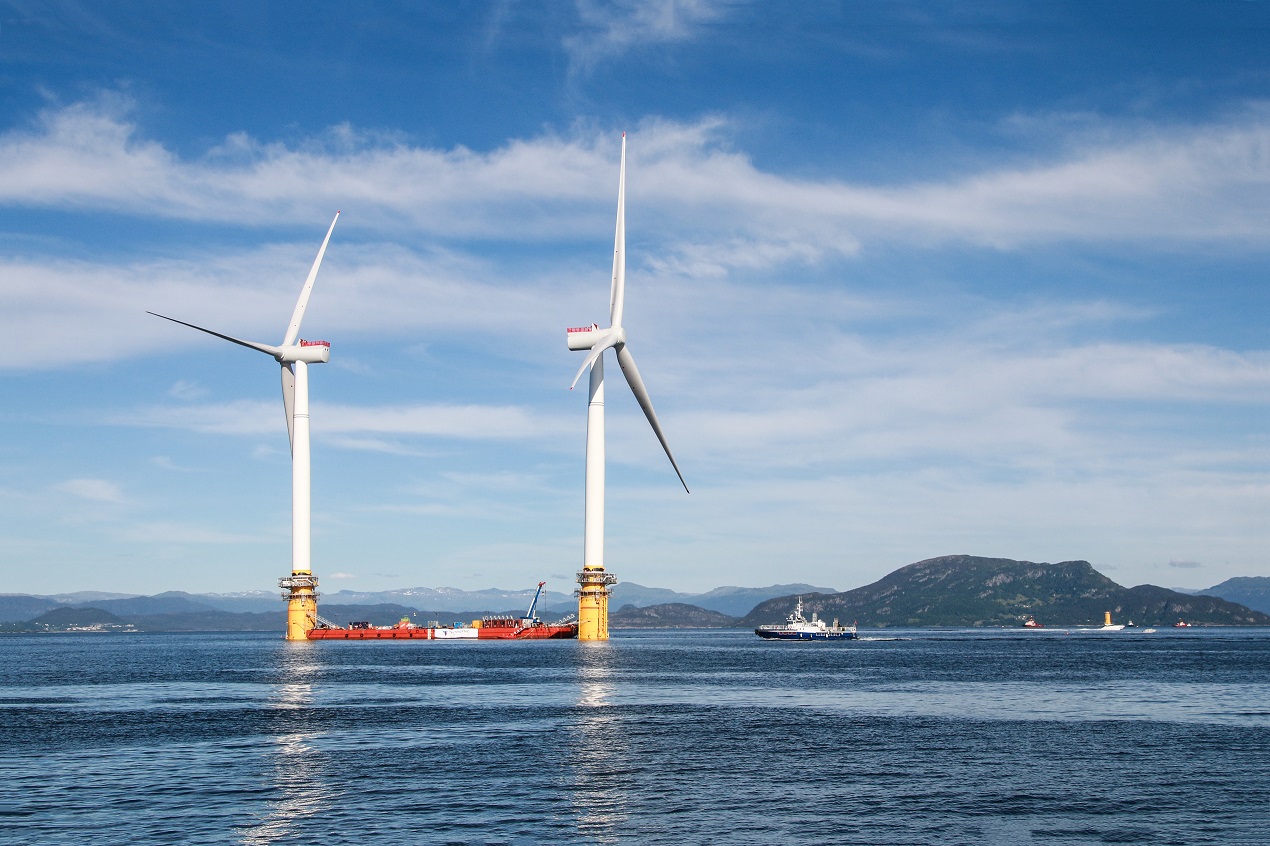The Energy Transition | Autumn Budget 2024
Published on 4th November 2024
Welcome to our top picks of the latest energy regulatory and market developments in the UK's transition to net zero

This week we provide our initial reaction to the Autumn Budget, as well as looking at proposed energy project reforms in Scotland, England's first-ever heat network zones and more.
Autumn Budget 2024: Headline progress for GB Energy, CCUS, green hydrogen and EV chargepoints
Last week's Autumn Budget saw the chancellor, Rachel Reeves, announce significant updates to planned investments designed to support the UK's energy transition and net zero goals.
Notable announcements include:
- A commitment to ringfence £125m for the proposed establishment and early operations of Great British Energy (GBE).
- A wider budgetary increase for the Department of Energy Security and Net Zero (DESNZ) from £6.4bn in 2023-24 to £14.1bn in 2025-26.
- £3.9bn set to benefit both Track-1 Carbon Capture, Usage and Storage projects, as well as established contracts with 11 green hydrogen producers.
- Over £200 million to accelerate the rollout of electric vehicle (EV) chargepoints across Britain.
- £3.4bn to be invested into increasing the energy efficiency and decarbonisation of household energy, as well as supporting the growing heat pump manufacturing supply chain.
- £2.7bn of funding to further support Sizewell C's continued development.
- The expansion of UK Export Finance (UKEF) to enable financing support to UK companies supplying critical minerals to exporters in high-growth sectors such as EV battery production and clean growth.
A further headline feature of the Budget included confirmation of an increase in windfall tax on oil and gas companies and measures to incentives decarbonisation. The Energy Profits Levy, introduced by the Conservative government in May 2022, was put in place to curb record profits being made by oil and gas companies during the energy crisis. It had originally been set to expire on 31 March 2029.
The Treasury has announced that the Energy Profits Levy would be increased from 35% to 38% and would be extended until 31 March 2030. It also announced that the 29% investment allowance for qualifying expenditure, which the government has described as "unjustifiably generous", would be removed in its entirety from 1 November 2024. It has been confirmed that any expenditure incurred before 1 November 2024, that would have otherwise benefited from the investment allowance for qualifying expenditure, will not be affected by the changes.
The decarbonisation investment allowance, which applies to investment expenditure on decarbonising oil and gas, will remain but will be set at 66%, down from the previous 80%. This is to incentivise the sector to invest in clean, low emission technologies. The government also confirmed that it wants to manage the energy transition by supporting jobs in existing and future industries and, therefore, is retaining the 100% first year capital allowances.
Despite these changes, the government has recognised the need to provide long-term certainty to the oil and gas industries on taxation and, therefore, will be publishing a consultation in early 2025 on how it expects the oil and gas industries to respond to price shocks once the Energy Profits Levy expires.
Osborne Clarke comment
With any change of government, it naturally follows that strategic priorities are re-laid for the upcoming parliament. This Budget reasserts the UK's commitment to its 2050 net-zero targets, with promising increases in government funding across a number of critical industries and sectors focused on achieving net zero. While it is too early to say how exactly additional funding for GBE and DESNZ will specifically be allocated, the growth in available investment into the wider energy transition is promising, particularly while other industries and government departments face a reduction in available funds from the public purse.
Consultation launched to streamline planning for large energy projects in Scotland
The UK and Scottish governments have launched a consultation on proposed changes to improve the planning system for large energy projects in Scotland. These proposed changes affect the entire planning system, from the pre-application process through to the ability to challenge decisions. The key proposals aim to cut delays, modernise the system, and create a fairer process that involves communities from the outset. The consultation opened on 28 October 2024, running for four weeks until 29 November 2024.
Currently, the approval process for large energy infrastructure in projects can take an average of four years, twice the timescale for comparable projects in England and Wales. While the Planning Act 2008 has streamlined the process in England and Wales, in Scotland, the process remains largely unchanged since the 1980s.
The proposed changes look to improve the quality and speed of applications, with the Scottish government gaining new powers to revoke, suspend or vary consents, as well as the ability to charge developers a fee for submitting wayleave applications for overhead lines on private land – a similar system to that of England and Wales.
DESNZ have suggested that the appeals process is also set to be standardised, with a set criteria for challenging decisions and a six-week time limit for raising objections, reduced from the current twelve-week review deadline.
Reforms to the public inquiry process are also proposed. Currently, an inquiry is automatically triggered when Planning Authorities raise objections, taking an average of 18 months to conclude. The Scottish government's hope is that inquiry sessions will be only be held when necessary if proposed reforms are implemented, with other forms of decision-making processes being used on a case-by-case basis, guided by a specialist reporter.
Acting cabinet secretary for net zero and energy, Gillian Martin, stated that: "These long-awaited UK legislative reforms will help support Scotland realise our clean power ambitions, while providing investors with confidence that a more robust and efficient process is being applied."
Government announces six locations for England's first-ever heat network zones
DESNZ has announced funding for the pilot of England's first ever heat network zones. These involve the use of a series of insulated underground pipes to recycle excess heat generated by industrial sources, such as factories or data centres, which can then be used to heat to other buildings within the network. The aim of the scheme is to provide low cost and low carbon heating from energy that would otherwise have been wasted.
The government has allocated a total of £5.8milllion to the project, which will be shared between the development of the six schemes. Leeds, Plymouth, Bristol, Stockport and Sheffield will each be home to one zone, while two will be created in London. Construction on each scheme is expected to begin in 2026.
The networks are aimed towards facilitating the connection of large non-domestic buildings, with some suitable offtakers including hospitals, universities, supermarkets, hotels and large office blocks.
The results of these pilot schemes will help to inform the government's goal of delivering heat network zoning at scale. The government has previously projected that heat networks will need to make up around 20% of the country's total heat supply if the UK is to achieve its wider goal of net zero by 2050.
Caroline Bragg, chief executive officer of the Association for Decentralised Energy, praised the announcement, underlining that "heat network zones are crucial for a just transition for our communities [,] putting the UK on the lowest cost pathway to decarbonising our heat".
Report projects clean energy technology market will triple to more than $2 trillion by 2035.
The International Energy Agency (IEA) has published the latest edition of the Energy Technology Perspectives (ETP) report, its annual publication on the clean energy sector and projected future trends. This edition focuses on the future of manufacturing and trade for the six clean energy technologies produced globally: solar photovoltaics, wind, electric vehicles (EVs), batteries, electrolysers and heat pumps. Its analysis forecasts that, based on current policies and trends, the global market for these technologies will triple from $700 billion in 2023 to more than $2 trillion by 2035.
The report considers the interface between three "strategic areas of public policy: energy, industry and trade", noting that these have become increasingly interlinked as the energy transition gains momentum. It projects that, based on the policy prevalent in the market today, international trade in the clean technology industry will reach $575 billion by 2035, which it states is close to 50% more than the value of today's natural gas trade. The largest section of this trade comes from EVs, which has doubled since 2020, and now makes up around one-fifth of the trade in all cars worldwide. This increase will be further driven by measures such as the UK's policy to ban sale of new internal combustion engine cars and vans in 2035.
The IEA concludes that to encourage innovation and boost progress towards climate goals, governments must ensure that industrial strategies are carefully curated to take into account this landscape of international trade, with long-term goals as well as short-term fixes in mind.
In addition, the report examines the concept of a "fair and just transition", in which the benefits of the shift away from fossil fuels are felt in countries at all stages of economic development in a way which reduces global inequality. The report emphasises the opportunity for emerging economies such as those in Latin America and Africa to develop their competitive advantage in certain technologies, but identifies that significant investment uptick is required.
Executive director of the IEA, Fatih Birol stated that “clean energy transitions present a major economic opportunity", and warned that "governments should strive to develop measures that also foster continued competition, innovation and cost reductions, as well as progress towards their energy and climate goals.”
This article was written with the assistance of Harry Warren, James Harnett and Alexander Eaton, trainee solicitors.








